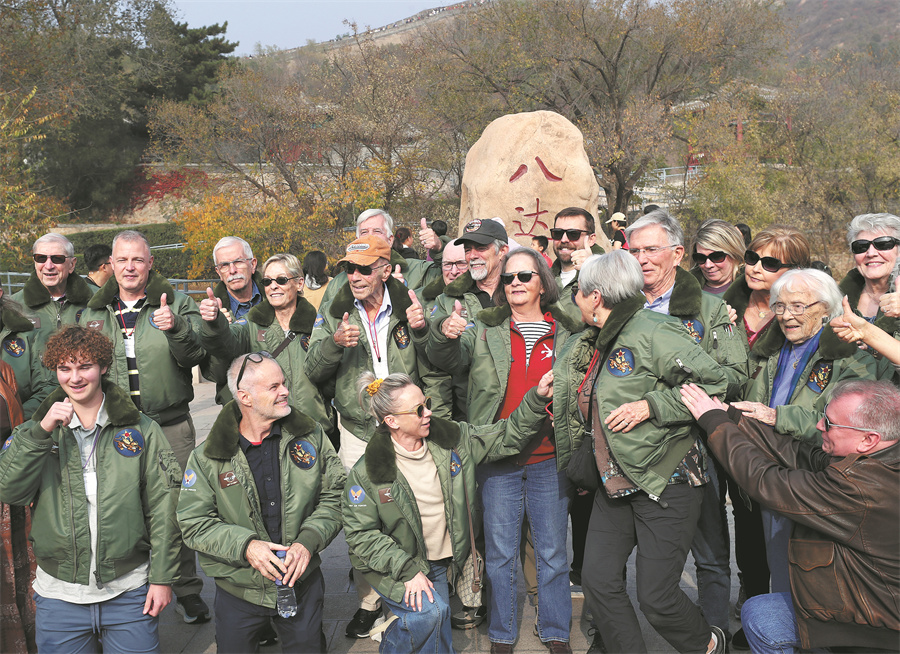China visit underscores flying tigers' legacy


Four generations speak out on overcoming lack of mutual understanding
The last surviving Flying Tigers — United States World War II air force veterans who helped the Chinese people fight Japanese aggression — have just had a rare opportunity.
They reunited with and traveled to China alongside first-, second-and even third-generation Flying Tigers' descendants.
The 10-day visit, which ended earlier this month, saw a delegation of more than 30 people visit historical sites and tourist attractions in places that included Beijing, Chongqing and Kunming, the capital of Yunnan province. They also attended friendship events.
Representatives from each of the four generations told China Daily why and how they supported the people from China and the US to exchange increased friendship and tackle a lack of understanding between each other.
Harry Moyer, a Flying Tigers veteran, turned 103 during the visit to China. After completing his air force mission during the war, he had only previously traveled to the country in 1995.
Moyer was presented with two big birthday cakes on Oct 30 at events held in Beijing by the US embassy in China and the Chinese People's Association for Friendship with Foreign Countries.
Asked about his birthday wish, Moyer said: "To tell you jokes, spread happiness, blessings and peace throughout the world, and have great companionship with all people. That's what we have to have."
He said people in the world "have to get together", adding, "It's a hard thing to do because of adversity, but it's such an easy thing to do if people apply themselves."
The Flying Tigers' mission, which started in 1941, was undertaken by the First American Volunteer Group, which was disbanded in July 1942. The US 14th Air Force continued the group's mission the following year.
Moyer, who was despatched to Italy in 1941 for combat duties, said, "When the Japanese entered Shanghai and Nanjing, there was worldwide coverage in the newspapers, Fox newsreels and in Life magazine.
"The Chinese people were exposed to the harshness of the Japanese occupation … and I just felt I wanted to do something about it. So when the time came for me to make a decision to do this, I did."
Moyer arrived in China in January 1944, when he and his group were transferred to the US 14th Air Force in China under the command of General Claire Chennault.
"I could have gone home — I had completed enough missions to go home, but I chose to go to China with my group. I stayed until September 1944, when I came home," he said.
Asked about the developments and changes he has seen on recent visits to China compared to his wartime experiences, Moyer said: "It's amazing. Even in 1995, it was just amazing — the progress that you see here, all the construction and the people.
"The Chinese have always been an industrious people, and this is well recognized today."
President Xi Jinping wrote a reply letter in September to Moyer, fellow Flying Tigers veteran Mel McMullen and Sino-American Aviation Heritage Foundation Chairman Jeffrey Greene, stating that he hoped the spirit of the Flying Tigers would be passed down to the next generation.
Moyer, whose grandchildren traveled with him on the recent trip, said: "They're going to gain a lot of information and a lot of history about China and its culture. That's a big thing, because the culture of China is so diverse and so ancient."


















